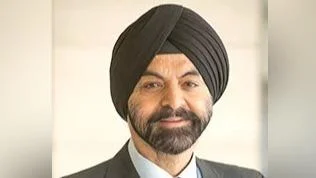Maintaining peace, supported by increasing farm profitability, diversifying income sources, enhancing access to basic social services, and upgrading infrastructure will accelerate poverty reduction in the Bangsamoro Autonomous Region in Muslim Mindanao (BARMM), according to the World Bank’s Philippines Economic Update released today.
Following decades of sluggish economic growth, Bangsamoro began to expand rapidly in 2017. The region averaged growth of 7.9% between 2017 and 2019, outpacing the rest of the Philippines, which grew an average of 6.4% prior to the COVID-19 pandemic.
For the first time in three decades, poverty has declined rapidly in the region, helped by income growth and government and private transfers. The region's poverty level dropped to 37.2% in 2021 from more than 60%, meaning approximately 892,000 people escaped poverty between 2018 and 2021.
"Diminished conflict has empowered farmers and entrepreneurs to invest more in their ventures, resulting in increased incomes and generating more income opportunities for workers,” said World Bank Country Director for Brunei, Malaysia, the Philippines, and Thailand Ndiame Diop. “Maintaining this peaceful trajectory is vital for the region's long-term prospects for development.”
Agriculture is the primary income source for most of BARMM's population. Sustainable poverty reduction will require enhancing agricultural productivity and raising farmers' incomes. Diversifying economic activity to create quality jobs is also essential to improving the region's economic prospects.
Bangsamoro is home to around five million people, predominantly comprised of Muslim ethnic groups, Indigenous Peoples, and other ethnic minorities. These communities have endured persistent conflicts including clashes between the military and rebel factions, political rivalries, and violent extremism.
The decline in poverty has coincided with implementing the Bangsamoro Organic Law in 2018 establishing BARMM as an autonomous administrative region; significant increases in financial support from the national government; and consistent economic growth. The national government’s budget allocation for BARMM nearly doubled recently to PHP 130 billion ($2.2 billion).
Despite these recent gains, BARMM's poverty rate was more than double the national rate in 2021. Additionally, the near-poor population increased from 22% in 2018 to 36% in 2021.
"Numerous households despite having risen above the poverty line remain in fragile economic conditions," said World Bank Senior Economist Nadia Belhaj Hassine Belghith. "This situation leaves them vulnerable to sliding back into poverty when confronted with economic shocks such as natural calamities underscoring continuing need for social protection and initiatives to improve livelihoods."
Improving access to basic services and infrastructure can help ensure rapid poverty reduction in BARMM. Around 28% of its population still depend on unimproved water sources while 37% use unsafe sanitation facilities. Approximately one-fifth lack access to grid electricity at home or work compared with just three percent nationally.
Low child health indicators subpar malnutrition vaccination rates limited education healthcare access further impede human development.
Boosting women's economic involvement empowerment urgently needed sustainable growth despite women outpacing men educational attainment underrepresented workforce high-earning roles limited infrastructure – including lack street patterns many communities highway access cellular phone signals internet connectivity compounds challenges especially agriculture-dependent households fishing communities self-employed groups.

